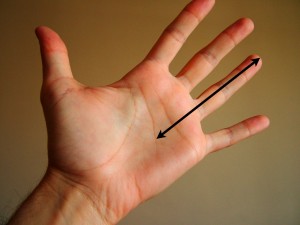The Complete Package for the Recreational Player – Part 2 – Racquet Basics
RACQUETS
Now that you’ve found your personal racquet technician to work with, let’s talk a little bit about choosing a racquet.
Understand the difference between racquet styles
Racquets are like cars; there’s a model to fit every person. Just as a 20-year-old might be better suited for a sports car, a 40-year-old with 3 kids needs a station wagon or a van. Seniors prefer something completely different, and this same principle can be applied to tennis racquets. Tennis racquets are designed for different stages of play:
- Kids and juniors
- Transition for teens to adults (often referred to as a “tweener” racquet
- Adult beginner to intermediate
- Adult intermediate to advanced
- Adult advanced

Here’s some basic information to help you get started:
- Racquets come in different lengths from 21″ long (junior) up to 28″ and in some cases, even longer. They’ve gone through stages where the length was even longer than 28″.
- Racquet weight is your friend; learn to use a racquet that is as heavy as possible while still feeling comfortable
- Recognize manufacturers’ weight designations; for instance, a Babolat Pure Drive “Team” is going to be a lighter version of the standard Babolat Pure Drive. “Team” is a designation for “light” in this case
- Racquet balance – Lighter, head-heavy racquets=short compact strokes typically for beginners to intermediate level; heavier, more evenly balanced racquets=more advanced players with long, loopy strokes
- Reference starting point: 300 swing weight & 300 overall weight=women//315 swing weight & 315 weight = men
- Stringing patterns: pay close attention to this-a standard string pattern is 16 mains (vertical) & 19 cross (horizontal) strings. String breakers can move to an 18×20 pattern (tighter) to help reduce string movement and thus, minimize notching and premature string breaking. If you desire more spin, then try one of the spin models that typically have fewer cross strings, like a 16×15 model. Go HERE to see a great video that explains Wilson’s Spin Effect Technology. Be advised – spin model racquets result in more string movement, which typically results in less durability of your strings.
- Beam widths – look at your racquet from the side and notice how wide it is = beam width translates to the stiffness of a racquet. Higher beam widths are less flexible and produce more power – think Wilson Profile 2.7
- Grip size-your technician should measure and properly fit you for grip size. Smaller grips allow for more flexibility in

Proper grip measurement the wrist (think Rafa Nadal) and allow the player to be more “wristy” with their shots, while larger grips will produce less wrist flexibility but also reduce racquet torque. Are you feeling the racquet turn in your hand on volleys at the net or when trying to return a harder serve? That’s the direct result of a grip that’s too small, and it’s spinning in your hand if you don’t hit the ball in the center of the racquet. This can also happen when the grip is too large.
- Last but certainly not least, I’m sorry to break the news, but you are not Roger Federer, Rafa Nadal, or Serena Williams. Just because they can get fantastic results from a particular racquet does not mean that you should run out and buy the same racquet and expect the same result. Let your racquet technician help you find the racquet that best suits your level of play and playing style. As your game improves and you grow out of your current model, you’re ready for another visit with your racquet technician to help you find a new racquet!
Buying a new racquet can be an exciting experience for an enthusiastic tennis player, and with the right help, you can be assured that you’re getting the right racquet the first time you buy!
You can go HERE to search listings of qualified racquet technicians in your area
Go HERE for part 1
Go HERE for part 3
Go HERE for part 4

Leave a Reply
You must be logged in to post a comment.